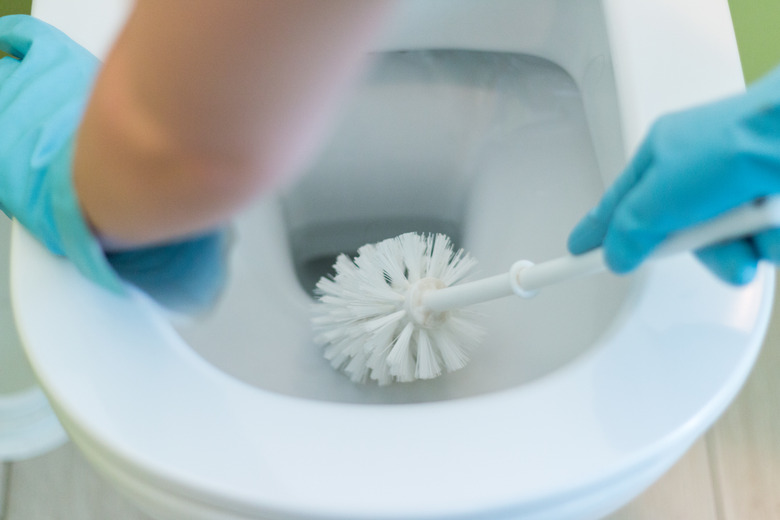How Often Should You Change Your Toilet Brush?
We may receive a commission on purchases made from links.
There are no two ways about it — your toilet brush really goes through it. They have one of the dirtiest jobs of any appliance out there, but in times of need, you wouldn't want to be without one. However, to make sure your toilet brush is doing the hygienic work you want it to, you need to make sure it's in good condition. Cleaning your toilet brush regularly can help to maintain it, but it's also important to know how often you should change your toilet brush.
Tip
You should be changing your toilet brush as soon as you notice discoloration or damage and at least every six months for a standard toilet brush.
Why Toilet Brushes Need Changing
Why Toilet Brushes Need Changing
Toilet brushes have one of the most unenviable jobs in the cleaning world, dealing with all the dirt, grime, waste and bacteria that collect in the average toilet bowl. The problem is, as they come into contact with all of that nastiness, they inevitably face some level of dirt transfer. This can mean that over time, a toilet brush can become even dirtier than the very toilet it's supposed to be cleaning!
On top of this general unpleasantness, though, toilet brushes can also be a genuine health hazard. NBC News explains that if one member of a household gets the stomach flu, replacing your toilet brush becomes a medical issue since you're dealing with potentially infectious materials.
Cleaning a Toilet Brush
Cleaning a Toilet Brush
You can extend the life of your toilet brush through regular cleaning and disinfecting. Metro recommends filling a bucket with boiling water and two caps of bleach and leaving your brush to soak in the solution for at least an hour. Make sure to take precautions when using a harsh cleaning product like bleach to avoid it getting on your skin. After soaking, you can spray down your toilet brush with an antibacterial spray and dry it off with paper towels.
On top of these deep cleans, you can also maintain a hygienic brush through the way you store it. Today recommends making a solution of 2 ounces of white vinegar with a few drops of essential oils. Tea tree oil is great to target bacteria, while lemongrass or lavender can add a pleasant scent. Use this mixture to rinse your toilet brush; then pour the rest into your toilet brush holder to keep it fresher for longer. The mixture should be replaced at least every two weeks.
How Often Should You Change?
How Often Should You Change?
While you can keep a toilet brush clean, fresh and hygienic for longer with regular cleaning and maintenance, it's still important that you don't keep it for too long, either. Signs to look out for that may suggest it's time to replace your brush include discoloration of the white bristles, bristles falling out and an unpleasant scent that doesn't dissipate after cleaning.
If you want a more specific toilet brush timeline, though, the Hartford offers some stricter rules. It claims that a standard plastic toilet brush should be replaced every six months. You can, however, get some more longevity from your brush by opting for a different style. A compostable toilet brush with a wooden handle and natural bristles not only lasts longer before it needs to be replaced, but it's also far better for the environment.
